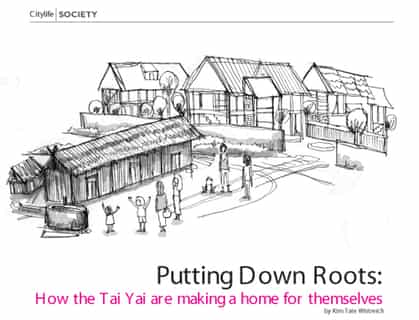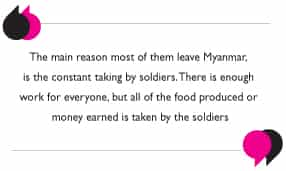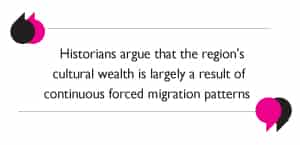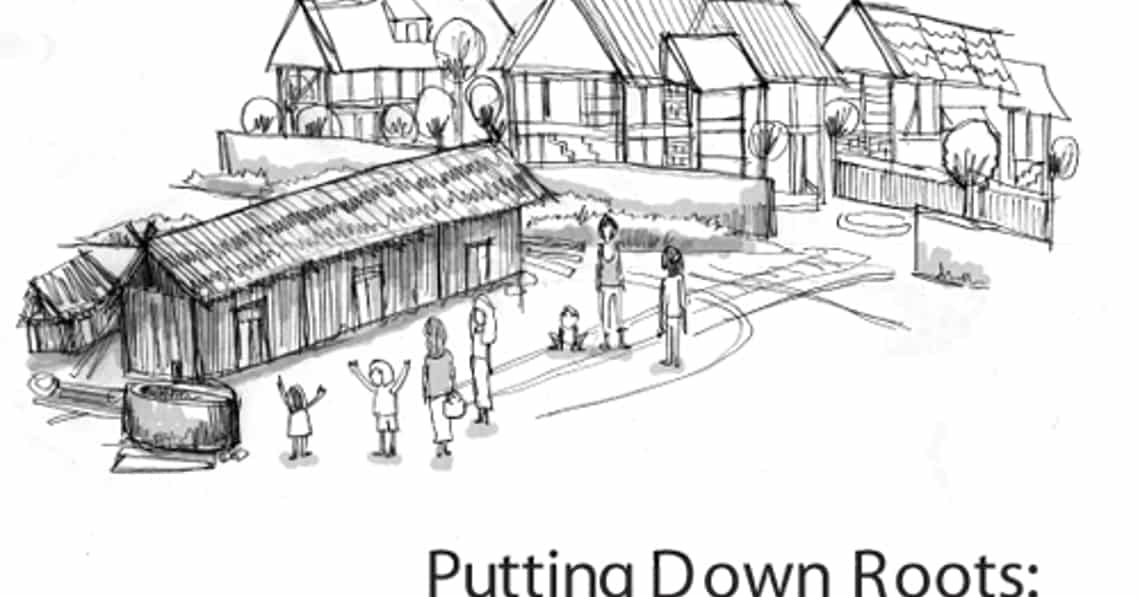
As far back as history chronicles, the mountain ranges of northern Thailand and the surrounding region have been home to a complex and diverse mosaic of continually migrating cultures and nationalities, living off the hills, and avoiding the hundreds of lowland kingdoms that have grown and crashed around them. One of the most recent mass movements of these peoples’ away from war and oppressive state-rule, is that of the Tai Yai or Shan peoples from military-ruled Burma into Thailand.
In a single generation, hundreds of thousands of Tai Yai, or, as they call themselves, Tai, spread themselves across what was once their sister kingdom, Lanna, now northern Thailand. Many have found residence in mountainous parts of Mae Hong Son, Chiang Rai provinces and Chiang Dao District of Chiang Mai, while others have moved on lowland areas surrounding Chiang Mai, looking for work.
“There are over 100,000 Tai people in the Chiang Mai area, and more in the provinces north of here,” explains Seng Meung of the Tai Culture and Literacy Society, based in Chiang Mai. “More than 80% of these were born in Burma the others are mostly second generation Thai.”
Plagued by war for decades, Meaung Tai, or what is now commonly known as Shan State, has seen thousands of villages systematically burned to the ground by the military government. Combined with horrifying rates of extortion, forced labour, torture and killings, millions have been forced to leave their homes, into hiding in the jungle across borders.
The majority of those in Chiang Mai have found work and shelter on construction sites for new moo baan suburban villages dotted around the city. One typical example can be found en route to Sankampaeng, tucked behind a gleaming housing complex. A right turn from the main road about 10 miles from the city will take you past the guarded gates of three villa complexes, each flanked by towering white pillars and adorned with the image of King Bhumibol.
Unseen by most, a few metres further will bring you to a fourth, more primitive entrance that dips off the tarmac road onto a dirt track, seeming like a portal into another era entirely.
A few hundred one bedroom bamboo huts, a large shared trough of rain water for washing, a single shop and 8 communal toilets fronted by corrugated iron doors, constitute the homes of the Tai Yai people who built the relative mansions next door. Though the housing complex has been finished, the rough-and-ready worker village remains, following negotiations between construction companies and local authorities to allow the cheap work force to remain indefinitely.

Around 5 p.m., the adults of the village return from worksites across town, wash together outdoors and then retreat to the family home, play sports or relax and drink lao khao or whisky, singing Shan songs.
“The men can earn 150 baht [a day],” explains Pane Sang, the owner of the village’s only shop. “The women usually earn 120 baht, but they do the same work. There is always work available, and new arrivals are helped by those already here to find work.”
The most defining aspects of Chiang Mai’s Tai subculture, most seem to agree, are the traditional events, beliefs and religious practises that have been acquired over the centuries. “Our traditional culture is the main aspect of our identity,” explains Pane Sang, “There are so many Tai festivals, such as New Year, the annual monk ordination ceremony, and monthly lunar festivals…In Thailand we are able to celebrate these much more freely than we ever could at home. If we tried to congregate in big groups in Myanmar, as when we tried to teach the Shan language to our children, we were instantly thought to be supporting rebel insurgents and would be punished. I often saw people beaten by soldiers for these things.”
As Seng Meung reiterates, “In Thailand, the authorities are supportive of our cultural and religious events, as long as we plan in advance and they are not politically motivated.”
As equally intrinsic to the Tai identity is their bond with the spirits of the rivers, forests and their ancestors. “The spirits are important to us,” Pane Sang explains. “Traditionally, if people in the community are feeling ill, or lose cows, buffalo or other things, they will protect us, so we have to respect them.” Surrounded by the tarmac, streetlamps and buildings of 21st century Chiang Mai, Pane Sang says the spirits are still ever present, and “will not leave us alone.”
Many elements of their traditional culture link Tai people more closely with the people of northern Thailand than those of central Myanmar. The language and arts of both cultures are also almost identical, owing to close relations between the kingdoms of Tai, Lanna and Ayutthaya for centuries past. Indeed, historical records suggest that people groups, spanning from South Western China, to North Eastern India, through mainland Thailand, to Laos and northern Vietnam, derive from Tai ancestry.
The essence of the particularly close relationship between Thai and Tai can be found at Wat Pau Pau, on the northern stretch of Chiang Mai’s moat, close to Chang Pheuk gate. Built in the late 19th Century by ‘Buddhist faithfuls from the Shan States’, the dilapidated temple is still a central hub for Chiang Mai’s Tai community, and includes a monastery for Tai monks and a school for Tai children, mostly from Myanmar themselves.
“There 165 students here,” explains a government-employed teacher of Tai ethnicity, sharply dressed in shirt and trousers. “Here, they study in the Thai language but also learn the Tai script and traditions…Most of them don’t have Thai ID cards but will, once they’ve been here for 10 or more years.”
There are also migrant support programmes at the monastery run by the monks. Chom Soong, a Tai monk who fled Myanmar 10 years ago now teaches Thai writing classes to migrant workers, and tells of their difficulties. “The main reason most of them leave Myanmar, is the constant taking by soldiers. There is enough work for everyone, but all of the food produced or money earned is taken by the soldiers.”
“They go to villages and take whatever they want,” repeats his layman friend, keen to explain the situation further.
Rates of extortion by government troops are at endemic heights. Recent studies by the Network for Human Rights Documentation-Burma concluded that the ruling junta has “transformed taxation from a routine and legitimate function of government into extortion and a tool of repression.”
“I try to teach them Thai and hope that things can be slightly easier for them here,” says Chom Soong, looking away bleakly, “Life is better here, but only slightly.”
The kind of difficulties which Chom Soong is talking about for Tai migrants largely stems from their lack of inalienable rights in Thailand and general discrimination. The latter seems often due to their Myanmar nationality, a stigmatised attribute exacerbated by gruesome tales of Burman oppression over the Lanna people between 1558 – 1727. Gruesome tales of war such as those of Lanna women being raped before having their faces removed, continue to pervade common discourse on Thailand’s westerly neighbour, in the north.

“Most Thai people call us Pama [Burmese]. In fact, we are not Thai or Pama, we have our own culture. That’s what most people don’t understand. Also, we cannot accept that we are Thai hill people, as some of our ID cards show. We have our own land and our own state. We are just visiting Thailand because our land [is ruled by Myanmar]. We could pretend to be Thai hill people so that so we all get ID cards, but we refuse to do that,” Pane Sang explains.
“Most Thai people treat us well, but we realise how many of them really feel when they mistake us for Thais. A few times, Thai people have come here and asked me under their breath how my family can live near the ‘Pama people’ and ask if they steal from us or cause us problems…They are surprised when I explain that I am the same as them and am not afraid.”
“We are also used as scapegoats for crimes committed here,” she continues. “A few years ago, some televisions were stolen from [the villas] and so the police took all of our fingerprints. However, the culprits turned out to be Thai people from the city.”
Unable or unwilling to integrate fully into the numerous growing economies of South East Asia, many Tai communities in and out of Myanmar have been dominated by corruption and black market industries. While many have relied on the opium trade for decades, a growing portion now receive large amounts in remittance from prostitutes, working in karaoke bars and go-go red-light districts across Thailand.
“In many cases, parents are particularly happy to have baby girls now, because they know they can grow up to go to Thailand and make money,” Seng Meung explains matter-of-factly, “In many cases, girls go to Thailand for a period and then return to build a family home and buy a car. Others in the community see that and then want to send their daughters.”
“The risks for these girls, and an increasing number of males, are substantial and often unknown to the family. As well as the threat of HIV contraction, sex workers travelling from Myanmar also face the risk of becoming victims of corrupt brokers, who often take huge cuts of their wages once in Thailand or sell them as commercial or domestic slaves.”
“In some cases, their families in Myanmar think that the girls have gone to work in factories or construction so let them go, and often they never see them again,” he said.
However, trying to find Tai working girls in Chiang Mai’s girl-bar district around Loi Kroh is no easy task, as this writer discovered. “There are no Pama people working here,” was repeated in girlbar after girlbar, “everyone here is from Thailand.”
“We have some girls from the mountains,” others said, “I don’t know what they are exactly, but they are all Thai.”
“We heard that they have some Pama,” a number of girls said, indicating other establishments across the street or down the road, often pulling grimaces or giggling contemptibly. But none wished to come forward.
Seng Meung, did note however, that the risks are fortunately decreasing for Tai sex workers. “Now that more people have access to communication technology, like mobile phones or the Internet, these girls can keep in contact with their families or friends in Myanmar,” making them less vulnerable to broker corruption. “In the past, they would often be trapped indoors without any way to communicate.”
Indeed, many of the issues caused by the influx of Tai people into Thailand, seem to be improving. “Before,” Seng Meung explains, “migration caused a lot of problems, but now that local people understand that they rely on migrant workers for their business, things are improving…This has been helped by better media coverage and documentaries about the diverse ethnicities of [Myanmar], and they understand we are not Burmese.”
Inter-community issues are also improving, explains Pane Sang, largely due to better community leadership, NGO support and improved relations with the Thai authorities.
“The police don’t come and raid our village anymore. They used to come and kick down doors and round people up for interrogation,” Pane Sang said, giggling shyly. “But since the construction companies arranged for us to receive an annual permit to settle here, that doesn’t happen…I’m also very happy that people here are becoming more united. In the past there were many violent disputes over gambling and a lot of alcohol problems, but now we have a list of rules up on the wall, which people stick to and ensure that they don’t behave anti-socially.”
The future of Thailand’s Tai Yai subculture and indeed the approximately 6 million Tai remaining in Myanmar is hard to predict. While many fear that coming generations will increasingly lose track of their heritage, millennia of Tai presence in the region will continue to influence the region’s arts, architecture, food and religious practices for decades. Indeed, historians argue that the region’s cultural wealth is largely a result of continuous forced migration patterns, creating a ‘shatter zone’ or convergence of multitudinous traditions and customs.
“I worry that my children will become a new ethnicity or nationality. It is therefore our responsibility to teach them about our dancing, language and literature…Every country’s traditions are good for its own people. Everyone is good, but we still need to keep our own ways, because they are good for us,” Pane Sang concluded.
And she’s not alone. As Seng Meung explained, “We are concerned about the second generation of Tai in Thailand because they cannot really speak Tai. The new generation dress and speak like Thai people, watch Thai TV and documentaries, this new generation follow Thai people. There is pressure on them in Thai society to conform and not be different, to fit in with Thai people.”
Resolved however, Pane Sang concluded before I said goodbye and walked back into mainstream Chiang Mai. “Culture doesn’t change when people come here. The culture is not something that can change.”
